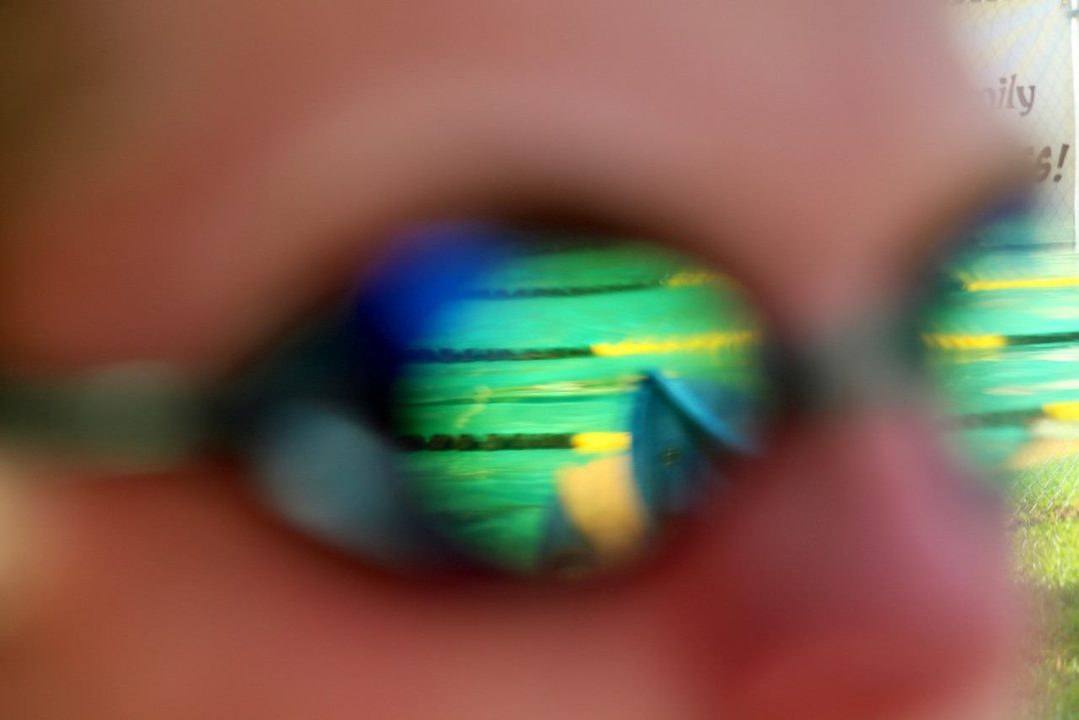Tom Miazga has a lot on his plate. The 22-year-old Paralympian Wisconsin (he competed in the 2008 Beijing Paralympic Games) coaches the Grafton High School girls’ team, is finishing a degree in education at Marquette University, and trains with Ozaukee Aquatics several times per week. Oh, and he just set three new American Paralympic records at the Schroeder A+ meet last weekend.
“A+ was my first meet in 10 months. With coaching the high school girls’ team and being in school I have not had much time for myself or for training,” he says. “I did a lot of work in the pool prior to coaching the girls. My schedule only allows me to workout with the Ozaukee Aquatics team on Tuesday and Thursday mornings; otherwise I am training alone.”
Miazga has spastic diaplegia, meaning that the muscles in his legs are perpetually tight, making it difficult for him to walk. He competes in the S8 Paralympic category, the division for athletes with “limited to no leg function.” Miazga now owns the S8 American records in 100 yard free (59.74), 100 yard back (1:04.84), and the 200 yard back (2:19.93).
Miazga’s bread-and-butter event is the 100 back and he was shocked with his time.
“When the high school girls’ season was over in November my backstroke felt different in all the right ways. I felt like I had oars!” he says. “A+ was my first meet in a long time and here I am getting an American record. The old record stood for ten years. It was huge to break it.”
The backstroker knew that his 200 would be great after setting the record in the 100.
“I had no fear; I just crushed it,” he says.
At Ozaukee Aquatics, Miazga had been experimenting with USRPT for about three weeks prior to the A+ meet. He definitely sees the merits of the much-debated training method.
“With my body I just don’t need to be doing 6000 yard workouts and with my schedule it’s great to be able to rip out 2500 yard practices,” he says. “In my 100 back at A+ my third 25 felt as fresh as my first 25. I think that USRPT removes some of the mental stigma associated with racing because you’re always doing race pace in practice. My first USRPT set was 30 25’s on 35 and I was holding 15.1 to 15.8, so, really, the 100 back is just 4 of those 25’s in a row.”
Miazga does feel that USRPT neglects some necessarily drill work. For instance, his disability requires that he focus more time on his turns. Yet, he is certainly pleased with the quality of the USRPT workouts that he’s experienced.
“It’s shocking how exhausting USRPT actually is,” he says. “You’re only doing 2500-3000 yards, but half of that is all-out sprinting.”
Although he’s a newly-minted triple American record holder, Miazga is not resting on his laurels.
“I’ll be tapering for the CanAm Championships (March 27 – 29, Miami, Florida),” he says. “CanAms serve as a qualifier for the Pan Pacific Para-Swimming Championships in Pasadena, California (August 6 – 10), so my goal is to make the Pan Pac team.”
The record holder would also love to see the disability side of swimming expand. He wants to show people with disabilities that they can do so much more than they might imagine. Miazga put this belief into practice as a student at St. Louis University when he volunteered with the Disabled Athlete Sports Association. Miazga also hopes that the general public will begin to take a greater interest in Paralympic swimming.
“We train as hard as non-disabled swimmers,” he says. “Go to a Paralympic swim meet and watch the athletes race and you will forget that those swimmers are disabled.”
Soon all Paralympic sports will be exposed to a much larger audience—NBC signed a deal to broadcast 100 hours of the 2016 Paralympic games live. So, if Miazga continues to swim as well as he did at the A+ meet, he may find himself on the flatscreens of millions of Americans in 2016, perhaps becoming a household name in the process.

Couldn’t agree more — Tom’s a great presence and role model for all swimmers. The Grafton girl’s team he helped coach this past fall won the Division 2 (small school) state title in Wisconsin, and I have little doubt Tom contributed to that team title. I’ve been admiring Tom’s swims for several years, and you’d be hard-pressed to find a nicer guy on deck.
I have two kids that have trained with Tom over the years and it’s hard to put into words the positive impact he has had on the Wisconsin swim community. Tom is a true gentleman and inspires on a daily basis via hard work and positive attitude. Without a doubt one of the true “good guys” in our sport.